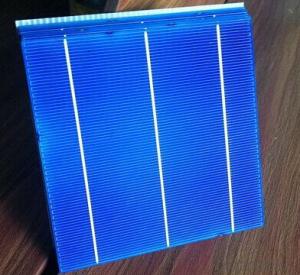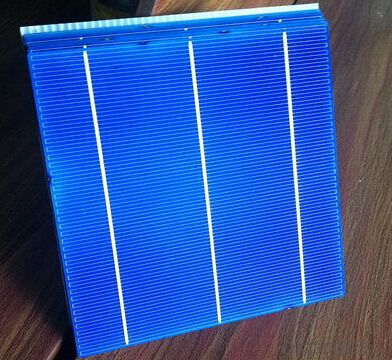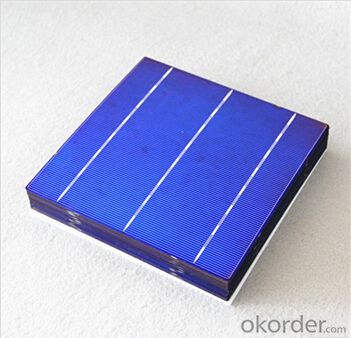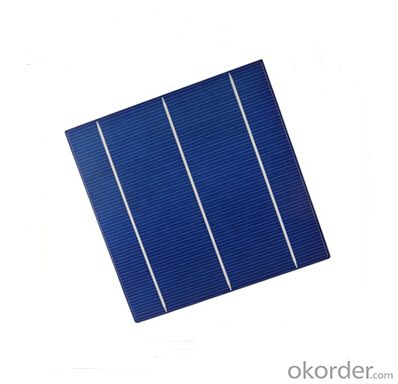Triple Junction Gallium Arsenide Solar Cells - Polycrystalline A Grade 3BB 156*156mm Low Price
- Loading Port:
- Shanghai
- Payment Terms:
- TT or LC
- Min Order Qty:
- 5000 pc
- Supply Capability:
- 8000000 pc/month
OKorder Service Pledge
OKorder Financial Service
You Might Also Like
Polycrystalline Silicon Solar Cells:
Solar cells is made by solar wafer, it has three categories of solar cell right now, monocrystalline polycrystalline and thin film,These cells are entirely based around the concept of ap-n junction, which is the critical part of solar module, it is the part that can convert the light energy into electricity, the thickness is from 180um to 200um, with even busbars to conduct electricity, textured cell can decrease diffuse reflection; they are often electrically connected and encapsulated as a module. Photovoltaic modules often have a sheet of glass on the front (sun up) side, allowing light to pass while protecting semiconductor wafers from abrasion and impact due to wind-driven debris, rain, hail, etc. Solar cells are also usually connected in series in modules, creating an additive voltage. Connecting cells in parallel will yield a higher current;With high quality and stable quality. Our Cells can greatly improve the performance of Solar Modules.
Polycrystalline Silicon Solar Cells Advantage:
• High efficiency and stable performance in photovoltaic conversion.
• Advanced diffusion technique ensuring the homogeneity of energy conversion efficiency of the cell.
• Advanced PECVD film forming, providing a dark blue silicon nitride anti-reflection film of homogenous color and attractive appearance.
• High quality metal paste for back surface and electrode, ensuring good conductivity, high pulling strength and ease of soldering.
• High precision patterning using screen printing, ensuring accurate busbar location for ease with automatic soldering a laser cutting.
Physical characteristics
Dimension: 156*156mm±0.5mm
Thickness: wafer(si): 200μm±20μm
Cell: 240μm±40μm
Front: silver bus bars;dark blue/others silicon nitride anti reflection coating
Back: silver/aluminum bus bars;full-surface aluminum BSF
Specification:
Mechanical data and design |
Format - 156 mm × 156 mm ± 0.5 mm |
Thickness- - 200 μm ± 20 μm |
Front (-) - 1.4 mm bus bars (silver),blue anti-reflection coating (silicon nitride) |
Back (+) - 2 mm wide soldering pads (silver) back surface field (aluminium) |
Temperature Coefficient of Cells |
Voc. Temp .coef.%/K -0.364%/K |
Isc . Temp .coef.%/K +0.077%/K |
Pm. Temp. coef.%/K -0.368%/K |
Efficiency code | Efficiency(%) | Pmax(w) | Impp(A) | Vmpp(V) | Isc(A) | Voc(V) |
182 | ≥18.20 | 4.43 | 8.26 | 0.536 | 8.71 | 0.634 |
180 | 18.0-18.2 | 4.38 | 8.22 | 0.533 | 8.68 | 0.632 |
178 | 17.8-18.0 | 4.33 | 8.17 | 0.530 | 8.63 | 0.630 |
176 | 17.6-17.8 | 4.28 | 8.12 | 0.527 | 8.60 | 0.627 |
174 | 17.4-17.6 | 4.23 | 8.08 | 0.524 | 8.56 | 0.625 |
172 | 17.2-17.4 | 4.19 | 8.05 | 0.521 | 8.53 | 0.622 |
170 | 17.0-17.2 | 4.14 | 7.99 | 0.518 | 8.49 | 0.620 |
168 | 16.8-17.0 | 4.09 | 7.94 | 0.515 | 8.45 | 0.618 |
Intensity Dependence |
Intensity [W/m2] Isc× [mA] Voc× [mV] Pmpp |
1000 1.00 1.000 1.00 |
900 0.90 1.000 0.90 |
800 0.80 0.99 0.80 |
500 0.50 0.96 0.49 |
300 0.30 0.93 0.29 |
200 0.20 0.92 0.19 |
IV Curve

Solar Panel Images:
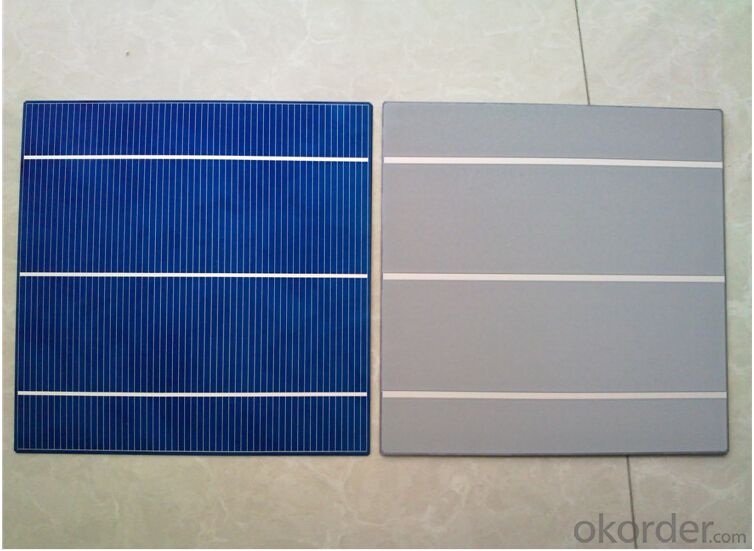
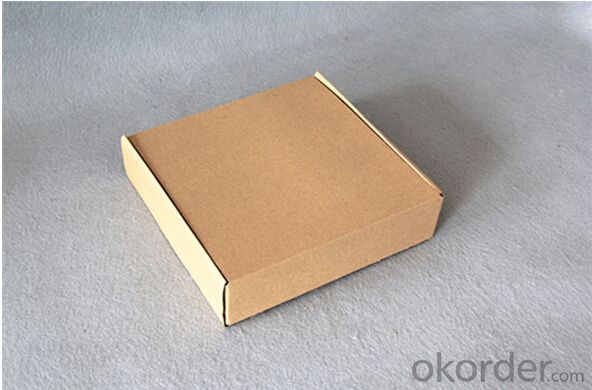
Packaging & Delivery of Polycrystalline Solar Cells
Carton Box Package and Deliver by air. It should be noticed that it should be avoid of water, sunshine and moist.
FAQ
We have organized several common questions for our clients,may help you sincerely:
①What price for each watt?
It depends on the efficiency of the solar cell, quantity, delivery date and payment terms.
②How long can we receive the product after purchase?
In the purchase of product within three working days, We will arrange the factory delivery as soon as possible. The pecific time of receiving is related to the state and position of customers.Commonly 7 to 10 working days can be served.
③Can you provide the peripheral products of the solar panels, such as the battery, controller, and inverter? If so, can you tell me how do they match each other?
Yes, we can, we have two companies for solar region, one is CNBM International, the other is CNBM engineering Co.
We can provide you not only the solar module but also the off grid solar system, we can also provide you service with on grid plant.
④What is your warranty of solar cell?
Our product can promise lower than 0.3% open box crack, we support claim after opening the box if it has crackm color difference or sth, the buyer should give pictures immediately, we can not accept the claim after the solar cell has assembled to solar panel.
• Timeliness of delivery
• ⑤How do you pack your products?
We have rich experience on how to pack the solar cell to make sure the safety on shipment, we could use wooden box or pallet as buyer's preference.
⑥ Can you do OEM for us?
Yes, we can.
Solar power has been able respected, more and more widely used, in large part because it is environmentally friendly way of generating renewable power generation process does not produce carbon dioxide and other greenhouse gases, will not pollute the environment, and therefore widely. From the current terms of the types of solar cells, including crystalline silicon cells, thin film batteries and other battery materials. Monocrystalline silicon cells are divided into cells, polycrystalline cells and amorphous silicon thin-film batteries.
For solar cells, the most important parameter is the photoelectric conversion efficiency, developed in the laboratory of silicon-based solar cells, Monocrystalline silicon cell efficiency of 25.0%, polycrystalline silicon cell efficiency of 20.4%, CIGS thin-film cell efficiency of 19.6%, CdTe thin film cell efficiency of 16.7%, an amorphous silicon (amorphous silicon) thin film battery efficiency of 10.1%, while in practical application efficiency is slightly lower this level.
We are familiar with crystalline silicon cells into single crystal and polycrystalline, except that the silicon wafers. Monocrystalline wafers made of polysilicon raw material crystal pullers pull into a bar and then sliced into monocrystalline, polycrystalline silicon film is made of polysilicon through ingot casting furnaces made of polysilicon ingots and then sliced. Since the difference between the fabrications of polycrystalline silicon solar cell battery much. But the conversion rate, the current conversion rate of monocrystalline silicon cells generally 16% to 18% conversion rate of polycrystalline silicon cells generally 15% to 16%. From the comparison of production costs, polycrystalline silicon cells cheaper materials manufacturing simple, to save power consumption, lower overall production costs, get a lot of development. Therefore, polycrystalline silicon cells accounted for two-thirds of the amount of crystalline silicon cells, accounting for over 55% of the solar cell market share. However, although the cost of polysilicon occupies advantage, in addition to the conversion rate lower than the silicon, its service life is shorter than the Monocrystalline silicon solar cells.
- Q: Can solar cells be used to power communication systems?
- Yes, solar cells can be used to power communication systems. Solar cells convert sunlight into electricity, which can then be used to power various devices, including communication systems. This is particularly useful in remote or off-grid areas where traditional power sources are not readily available. Additionally, solar power is considered a clean and renewable energy source, making it an environmentally friendly choice for powering communication systems.
- Q: How much space is required to install a solar cell system?
- The space required to install a solar cell system depends on several factors such as the size and efficiency of the solar panels, the energy needs of the property, and the available sunlight. Generally, a residential solar system can require anywhere from 100 to 1,000 square feet of roof or ground space. However, it's best to consult with a professional to accurately determine the space requirements based on specific circumstances.
- Q: Are solar cells recyclable?
- Yes, solar cells are recyclable.
- Q: How are solar cells different from solar panels?
- Solar cells are the individual units that convert sunlight directly into electricity, while solar panels are a collection of these cells that work together to generate a larger amount of power.
- Q: What is the role of voltage regulators in solar cell systems?
- The role of voltage regulators in solar cell systems is to ensure a stable and regulated output voltage from the solar panels. They act as a control mechanism to prevent overcharging of batteries or damage to electronic devices by regulating the incoming voltage from the solar cells. Voltage regulators also help optimize the efficiency of the solar cell system by matching the voltage levels of the solar panels with the load requirements, thereby maximizing the energy conversion and utilization.
- Q: Can solar cells be damaged by hail or strong winds?
- Yes, solar cells can be damaged by hail or strong winds. Hailstones can cause physical damage by cracking or breaking the surface of solar panels, which can impair their performance. Similarly, strong winds can dislodge or break the panels, leading to functional issues. Therefore, it is important to consider the potential risks of hail and strong winds when installing solar cells and take appropriate protective measures.
- Q: Can solar cells be used on boats?
- Yes, solar cells can be used on boats. They are a popular and sustainable source of energy for powering various systems on boats, including lighting, navigation equipment, and charging batteries. Solar panels can be easily installed on the deck or roof of a boat to harness sunlight and convert it into electricity, reducing the reliance on traditional fuel sources and offering a clean and renewable energy solution.
- Q: How are solar cells used in calculators?
- Solar cells are used in calculators to convert sunlight into electrical energy. This energy is then used to power the calculator, eliminating the need for batteries or other external power sources.
- Q: How do solar cells perform in regions with high levels of snowfall and blizzards?
- Solar cells typically do not perform well in regions with high levels of snowfall and blizzards. The accumulation of snow on the solar panels can block sunlight from reaching the cells, significantly reducing their efficiency. However, some solar systems are designed with a tilt or heating elements to help shed snow or melt it off the panels. Additionally, periodic maintenance and cleaning may be required to ensure optimal performance in these conditions.
- Q: Can solar cells be used for powering shopping malls?
- Yes, solar cells can be used for powering shopping malls. By installing a sufficient number of solar panels on the rooftops or in parking lots, shopping malls can generate renewable energy to meet a portion or even the entirety of their power needs. This can help reduce dependence on fossil fuels, lower electricity costs, and contribute to a more sustainable and environmentally friendly operation.
Send your message to us
Triple Junction Gallium Arsenide Solar Cells - Polycrystalline A Grade 3BB 156*156mm Low Price
- Loading Port:
- Shanghai
- Payment Terms:
- TT or LC
- Min Order Qty:
- 5000 pc
- Supply Capability:
- 8000000 pc/month
OKorder Service Pledge
OKorder Financial Service
Similar products
Hot products
Hot Searches
Related keywords
